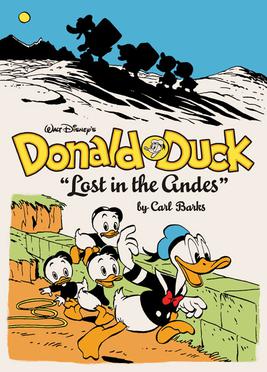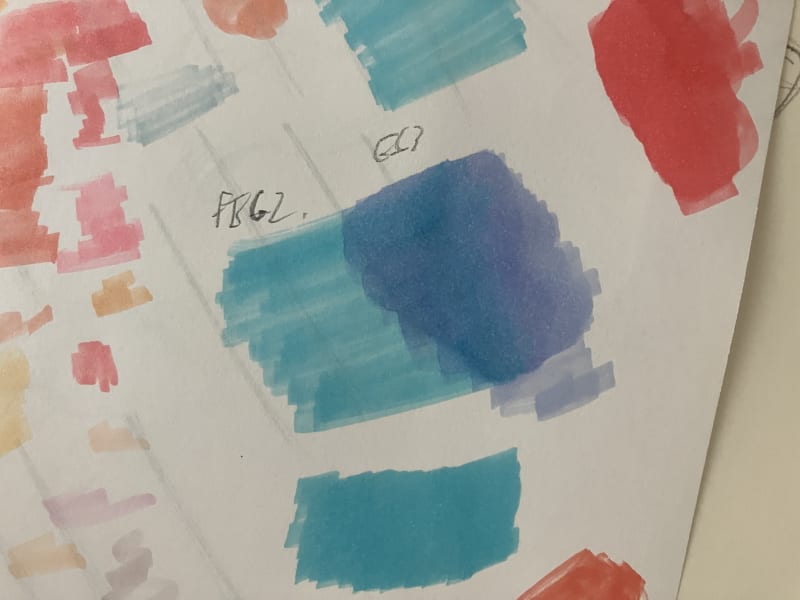Chris Padilla/Blog
My passion project! Posts spanning music, art, software, books, and more. Equal parts journal, sketchbook, mixtape, dev diary, and commonplace book.
- Background
- Borders
- Colors
- Display
- Opacity
- Position
- Sizing
- Vertical Align
- Z-Index
- Data Caching
- Refetching at an interval
- Data Fetching State (such as
isLoadingorerror)
Migrating a React App To TypeScript
After 10 years on the scene, TypeScript has become an essential tool in many codebases.
The benefits are primarily static testing: Similar to C#, you'll get compile time errors regarding type-mismatches.
Though, most folks I know that use it love it for the DX. VS Code has first class support for TypeScript, providing stellar autocomplete for all objects and classes that are typed in your codebase. Likely, you've already enjoyed the benefits of autocomplete for methods from external libraries that ship with Types.
Migrating Create React App to TypeScript
There was a time when getting the tooling for TypeScript up and running was a headache. Not anymore! Many modern frameworks can initialize a project with TypeScript using a simple options flag in the CLI.
If working with Create React App, migrating is wildly easy. Simply install typescript dependencies, then restart your dev server.
npm install --save typescript @types/node @types/react @types/react-dom @types/jestOpt In
It's easy to dip your toes into TypeScript because it's an opt in system. The same TypeScript project can have as many JS files in your /src.
So to get started, simply convert a file.js to file.tsx for react and you're off and running!
A note here: your bundler may support JS imports without the file name, but you may need to be explicit with TypeScript imports.
// JS File
import EditAuthors from './components/EditAuthors';
// TSX Files, will not compile without file extension
import EditBook from './components/EditBook.tsx';
import Books from './components/Books.tsx';
import Book from './components/Book.tsx';Package Types
Again — there was a time where not all packages shipped with Types. Long gone are those days now! When using an external library, you should be able to find info in their documentation about supported types. Here's Formik as an example.
import { Formik, FormikErrors } from 'formik';
import { BookSubmitObject } from '../types';
<Formik
initialValues={initialValues}
validate={(values: BookSubmitObject) => {
const errors: FormikErrors<BookSubmitObject> = {};
// Validate Errors
if (values.rating > 5 || values.rating < 1) {
errors.rating = 'Must be within 1 and 5';
}
return errors;
}}
...
>So that's getting setup! More on how to actually write with TypeScript another time. 👋
Picking a Locale — Overcoming the Blank Page with Carl Barks
A fun rabbit hole I've been down is learning more about "The Good Duck Artist" Carl Barks.
Barks was a self taught cartoonist and an early legend in comics. He's known for his Donald Duck and Scrooge McDuck cartoons. Wickedly talented in every domain within comics — Story, drawing, expression, color, inking — he was also incredibly prolific, releasing comics regularly over a 25 year career.
Interestingly enough, Barks was more widely famous in Danish culture as opposed to the US due to Donald Duck being the lead character in Denmark instead of Mickey Mouse. Hence, why one of my top searches for "Carl Barks Interviews" brought me to a Danish recording:
Aside from how lighthearted Barks is about his work and characters, my favorite part of the interview comes from the question of how he came up with all of these stories:
"I would just start thinking of what I would like to draw. Because those comic book stories required a great number of hours of drawing and if I could think of some pleasant place — a south sea island or trip into the mountains — something that would give me some good backgrounds and interesting things to draw, then I would chose that as the locale of my store. Then once I've chosen the locale... somehow the ideas for a story, something for those ducks to do, would just come about! The ideas would just pour down onto my head."
I've heard elsewhere that Barks would use National Geographic issues as reference and inspiration for these far-flung adventures.
From his Biography, Terry Pratchett described in his process having a horizon off in the distance. He didn't always know how he was going to hit certain story beats, but having a destination helped move the story there.
My biggest case of "fearing the blank page" comes with writing music. Something about music being less physical makes it a bit more daunting to get started on. But stories really aren't so different. Nothing helps me kick start a song quicker than deciding on a "locale" — be it genre, a pallet of instruments, or even just a song title.
As is my contractual obligation to say in these posts: So it is with anything creative. Starting with a title helps with writing. Starting with a subject matter helps with drawing. Starting with an app idea helps with software.
Starting an adventure is easier once you've settled on a point of departure.
Spanish Melody
Picked up a new book for this pretty instrument.
Moose!
Utility Classes in Bootstrap
TIL that Bootstrap has a few utility classes for customizing beyond the basic styles.
This was a surprise to me! My experiences with Bootstrap has been to quickly put together prototypes and learning projects. So custom templating was not a high priority. Whatever came out of the box worked fine.
Though, in my current case, I had a situation where I wanted to adjust spacing. In Tailwind or a CSS-in-JS environment, granular updates are easy enough. But in my current project, I've only been using bootstrap styles. So I was looking at a potential break in flow if I reached for another css library or fired up a css file just for a few custom spacing classes.
Not the end of the world to go with those options, but it's handy to see that Bootstrap had me covered!
If you're familiar with Tailwind, these will look pretty familiar. Here's the example from Bootstrap's docs:
.mt-0 {
margin-top: 0 !important;
}
.ms-1 {
margin-left: ($spacer * .25) !important;
}
.px-2 {
padding-left: ($spacer * .5) !important;
padding-right: ($spacer * .5) !important;
}
.p-3 {
padding: $spacer !important;
}Actually, looking through the Utilities sections of the docs, there are several utility classes that I commonly reach for in tailwind:
It doesn't cover the whole spectrum of CSS in the same way that Tailwind does, of course. Off the top of my head, I know that CSS transition properties are missing. Really, though, Tailwind is solving a different problem — atomic classes to reduce premature abstraction while still keeping a highly flexible design system, whereas Bootstrap is a CSS framework.
I've largely stayed away from CSS frameworks in my personal projects. I'm comfortable with writing custom CSS, and I like the flexibility of writing by hand. I've been delightfully surprised with using Bootstrap lately, though. You could supplement any CSS library with utility classes through Tailwind or combine with custom CSS.
But, in cases where I want an all in one solution, I'll be keeping an eye out for libraries that expose their own utility classes.
My Comfort Work and "Do You Like Sentences?"
Technique is a bit of a vice for me.
When in doubt, I draw boxes.
When in doubt, I play scales.
When in doubt, I mess around with a toy app in software.
It's my vice because I'm guilty of probably practicing too much technique and not just making things more often. But there it is. It's my "comfort work" as Austin Kleon puts it.
To each their own. It gets me in the studio, in front of the piano, and in my code editor. Usually, that's where I need to start to get to the really good stuff, anyway.
I'm at least in good company. In The Writing Life, Annie Dillard shares an interaction between a fellow authorand a student where the student asks "Do you think I could be a writer?" Their response:
"Do you like sentences?"
I like sound and lines. I even like the colored text in VS Code! So I'll take it as a sign that I'm in all the right crafts.
Liszt – Liebestraum No 3 (arranged)
A Good Pup
Data Fetching with React / TanStack Query
TanStack Query (formerly React Query) is a delightful library for handling state around fetching data. If you're familiar with Apollo Client for GraphQL, but aren't using GraphQL in your app, TanStack Query gives you many of the same benefits:
If you're coming from a redux environment, much of the above was managed by hand. TanStack Query, however, takes care of the above automatically, while still exposing opportunities to make manual fetches when needed.
Set Up
The quick start in the official docs should be enough to get you going.
The gist is you'll wrap your app in a QueryClient provider. Similar to the Redux provider, this will store your data at an application level.
import React, { Component } from 'react';
import { Route, Routes } from 'react-router-dom';
import { QueryClient, QueryClientProvider } from '@tanstack/react-query';
import AppRoutes from './AppRoutes';
import { Layout } from './components/Layout';
import './custom.css';
const App = () => {
const queryClient = new QueryClient();
return (
<QueryClientProvider client={queryClient}>
<Layout>
<Routes>
{AppRoutes.map((route, index) => {
const { element, ...rest } = route;
return <Route key={index} {...rest} element={element} />;
})}
</Routes>
</Layout>
</QueryClientProvider>
);
};
export default App;Sending a Query
TanStack Query is not a replacement for fetch. Its focus is the state and caching of your data. So you'll still need to write a query function:
const fetchBooks = async () => {
const response = await fetch('book');
const data = await response.json();
return data;
};Once you have it, you'll pass it into the useQuery hook with a couple of options:
const { data, isLoading } = useQuery({
queryKey: ['books'],
queryFn: fetchBooks,
});The queryKey is an array of values that will help keep your query labeled. This is helpful in the event you want to invalidate the query, essentially asking for another network request to be sent to update the data in the cache.
From the result, we're destructuring what we need: the data and the state isLoading.
isLoading can be used to show a loader to the user in your UI:
return (
<div>
<h1 id="tableLabel">Books</h1>
<p>This page demonstrates fetching data from the server.</p>
<div>
{isLoading ? (
<p>
<em>Loading...</em>
</p>
) : (
renderTable(data)
)}
</div>
</div>
);isLoading pertains to the initial fetch. For the state of another query being sent, you'll want to reach for isFetching.
Query With Filters
Sometimes you just need one book. Query keys are commonly used for passing arguments to your fetch methods.
Here's the useQuery setup:
const { data, isLoading } = useQuery({
queryKey: ['books', { id }],
queryFn: fetchBook,
});And here's how we access the arguments in the query function:
const fetchBook = async ({ queryKey }) => {
const [, { id }] = queryKey;
const response = await fetch(`book/edit/${id}`);
const data = await response.json();
return data;
};Service and Expression
One of the best distinctions I made a few years ago was understanding that my work would be balanced by two spheres: Service and expression.
I dipped my toes into SVSLearn's illustration podcast on an episode about what it's like diving into the comics industry. Not my personal goal, but I've been reading a lot of comics and I thought it would be interesting!
Right out the gate, the guest described his work as a rollercoaster ride between the stable, steady work in animation and writing comics, where there's comparatively no money to be made.
Tim Ferris describes a similar back and forth in the Four Hour Work Week, coining the term"mini retirements." Tim would work his butt off launching a product or project, working 12-16 hour days, and then spending those same 12-16 hours in brazil learning salsa dancing for three months.
A little extreme for my personal taste and for this phase of life. To each their own, but in my experience it's a lot more sustainable to work a bit of both into your daily life.
Back to the podcast: the guest describes a tension creative people fill: to have the stability and camaraderie of working on a team to bring someone else's vision to life — and the tension to create something wholly your own, and have your own voice fully expressed.
I think we all experience a bit of that, and we all find our own ways to fill those needs. Understanding that there's a difference between the purpose of those two spheres of work makes a world of a difference, though.
My software work isn't dragged down by ego. Because I have a few options for expression and play, I can more fully do work during the day that best serves the interest of my colleagues.
And vic versa. When I was a music teacher, my creative work felt like it had to be tied with teaching. I didn't feel like I could really explore visual art or piano or writing music because my full time gig was playing and teaching saxophone. Surely I had to be putting my free time in on the horn, too! Now, because my daytime work is a world apart, there's no baggage around what I should be doing to express myself. Heck, I've said it before, I'll say it again — blogging has surprisingly been one of the best ways to fulfill that itch!
Calling those halves service and expression works for me, but maybe Tony Robin's terms of Stability and Instability works better for you. Or maybe Brene Brown's guidepost to find "Meaningful Work." I'm a person that's driven primarily by the desire to create. But say that you are actually primarily service driven. Then, the two spheres might include stable service and unstable service. That stable service of holding a marketing job that pays the bills, balanced with the unstable (but more fulfilling) service work of non-profit contributions and volunteering.
What ever the words really are — finding balance between two complimentary needs can make the world of a difference in everyday fulfillment.
Faber - Tropical Island
COLOR!! 🖍
My sister very kindly loaned me her Copics to play with!
After months in greyscale, it's fun to have shades and hues to work with!
Perfect opportunity to do this Satsuki study from My Neighbor Totoro! Borrowed from this beautiful Miyazaki art book.
From MVC to API Routes in ASP.NET Core
MVC patterns make for quick and easy development in .NET Core. This week, I'm switching over to an API servicing a React application, and there are a couple of small differences in getting started with serving up API endpoints:
ApiController Attribute
In MVC, all we needed to setup a controller was inherit from the controller class:
namespace BulkyBookWebDotNet6MVC.Controllers
{
public class CategoryController : Controller
{
. . .
}
}For API's, we need to go up the family tree to ControllerBase, which controller inherits from:
namespace BulkyBookWebDotNet6MVC.Controllers
{
public class CategoryController : ControllerBase
{
. . .
}
}Attributes
In addition, we need a few different attributes:
[ApiController]
[Route("[controller]")]
public class BookController : ControllerBase
{
. . .
}[ApiController] will give goodies specific to APIs, such as specifying routes and more detailed error responses.
Since we have to specify routes, we're doing so with the next attribute [Route("[controller]")] We're defaulting to the controller based routing, but we could just as well define our own route such as [Route("/users")]
Return
Of course, since we're working with an API returning data and not a View from an MVC, the return methods will be slightly different. [ApiController] provides methods that are analogous to Status codes:
if (BookFromDb == null)
{
// Status: 404
return NotFound();
}
// Status: 200 with created object
return Ok(BookFromDb);And that should be enough to get started! More details are available on MSDN.
C Fingerstyle Barre Improv
Just messing around today!







